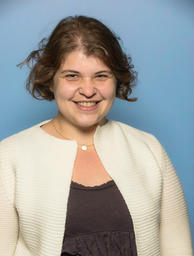
Event Date:
Thursday, May 24th, 2018 – 12:00 PM to 1:00 PM
Speaker:
Natela Shanidze
Abstract
Abstract”
Age-related macular degeneration (AMD) is the most common cause of central field loss in the world. In individuals with CFL, the quality and control of eye movements are greatly impaired for several reasons. First, CFL is typically associated with the loss of the fovea, the central retinal region of greatest acuity and also the reference location for the translational eye movements. Second, the region of the retina used as a fixation locus (preferred retinal locus, PRL) tends to be at larger eccentricities, making eye movements programmed to move relative to the center difficult. Finally, because retinal lesions, or scotomas, develop relatively independently in the two eyes, patients frequently experience a loss of their binocular field of vision and symmetrical eye movements may not allow both eyes to be placed on the target.
Humans constantly use a combination of head and eye movements to maintain a clear view of their world. For example, when trying to catch a bus, an individual would need to calibrate his or her eye movements and vestibular responses such that the goals of identifying the correct bus, visualizing the entry point and boarding safely can be achieved.
Loss of vision in general and foveal vision in particular, has significant implications for patients’ quality of life and presents risks such as falling. Notably, the vestibular system is known to depend on central vision for calibration, to both improve retinal stability and distinguish motion in the environment from that of the individual. Vestibular deficits are particularly evident in the CFL population: two-thirds of patients complain of dizziness, instability, and have an increased rate of falls. My future work will address the gap in understanding the interaction of vestibular and visual inputs and their contribution to balance difficulties in CFL.
This talk will present past and ongoing research that examines the effect of CFL on smooth pursuit (in the presence and absence of head movement) and will discuss future research directions addressing vestibular deficit in CFL.
